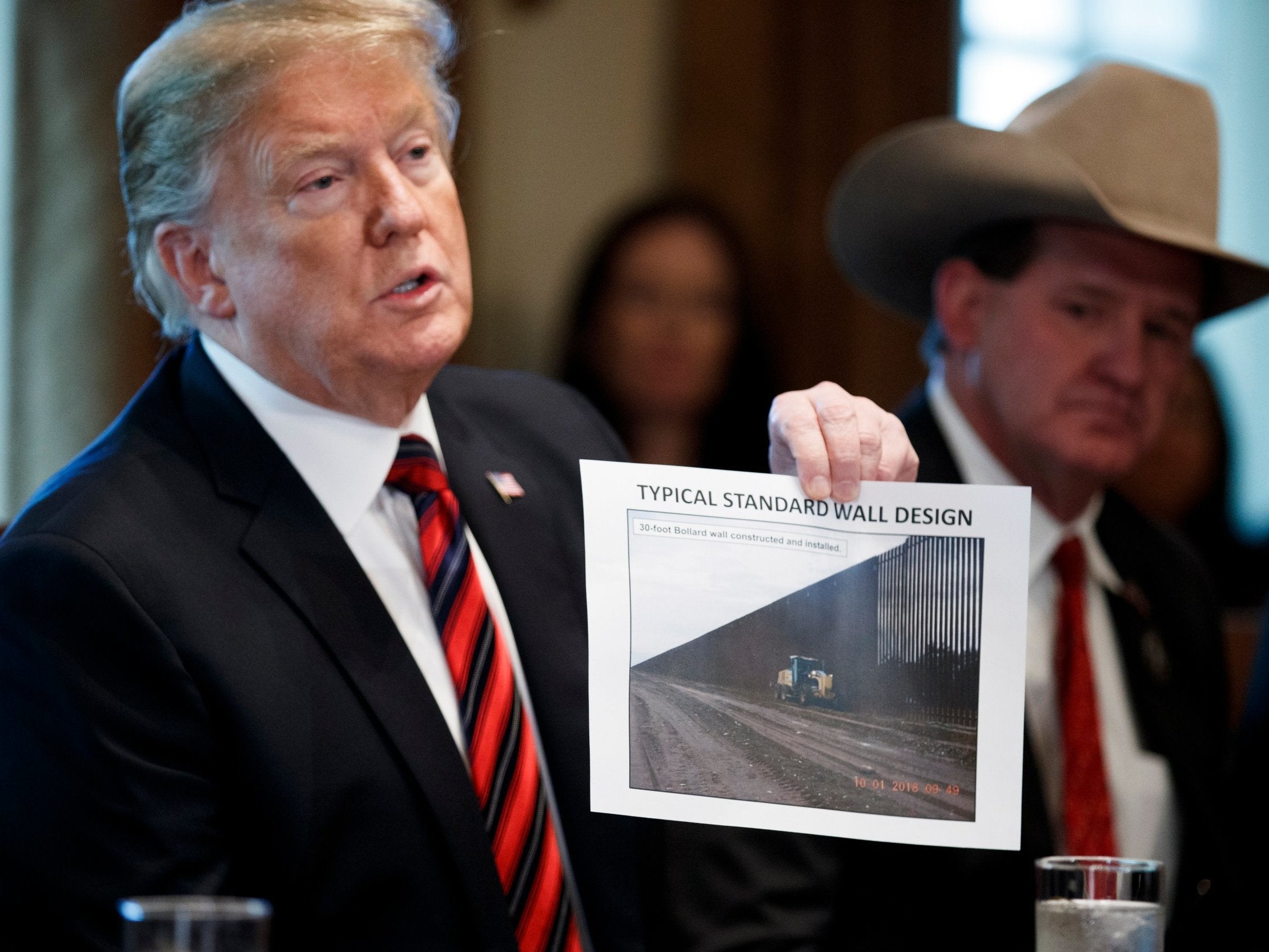Government shutdown: Standoff over border wall officially becomes longest closure in US history
Trump administration breaks Clinton-era record as closure enters fourth week

Your support helps us to tell the story
From reproductive rights to climate change to Big Tech, The Independent is on the ground when the story is developing. Whether it's investigating the financials of Elon Musk's pro-Trump PAC or producing our latest documentary, 'The A Word', which shines a light on the American women fighting for reproductive rights, we know how important it is to parse out the facts from the messaging.
At such a critical moment in US history, we need reporters on the ground. Your donation allows us to keep sending journalists to speak to both sides of the story.
The Independent is trusted by Americans across the entire political spectrum. And unlike many other quality news outlets, we choose not to lock Americans out of our reporting and analysis with paywalls. We believe quality journalism should be available to everyone, paid for by those who can afford it.
Your support makes all the difference.The US government shutdown has become the longest closure in the country’s history, entering its 22nd day on Saturday.
The previous record for the longest shutdown occurred during Bill Clinton’s presidency, which lasted 21 days from 15 December 1995 until 6 January 1996.
The current shutdown appears destined to last a few more days, at the very least, after Democrats rejected Donald Trump’s demands to include $5.7bn for a southern border wall in a spending bill.
Mr Trump has threatened to declare a national emergency to fund his wall with Mexico without congressional approval, but said that he is “not going to do it so fast” because he would still prefer to work a deal with lawmakers.
The partial shutdown has put 380,000 federal workers on leave and forced an additional 420,000 to work without pay. On Friday the House and Senate voted to give federal workers back pay when the government reopens.
Nine of the 15 cabinet-level departments have not been funded. The Defence Department and the Department of Veterans Affairs, the government’s largest agencies, are the most notable exceptions.
Although many federal employees do not know when they will see their next paycheck, the Trump administration has some leeway to choose which services to freeze and which to maintain during the standoff.
Some experts have noted choices which seem targeted at shielding Republican-leaning voters.
The administration has emphasised continued use of public lands, and particularly for hunters and oil and gas developers, angering environmental groups. And the IRS will continue to issue tax refunds during the shutdown.
Russell T Vought, deputy director of the Office of Management and Budget (OMB), said the overarching message from Mr Trump has been “to make this shutdown as painless as possible, consistent with the law”.
“We have built on past efforts within this administration not to have the shutdown be used to be weaponised against the American people,” he added.
Others say such a strategy suggests a lack of urgency and a willingness to let the political impasse in Washington drag on indefinitely.
“The strategy seems to be to keep the shutdown in place, not worry about the effect on employees and furloughed people and contractors, but where the public might be annoyed, give a little,” said Alice Rivlin, who led the OMB during the 21-day shutdown in 1996.
“We weren’t trying to make it better. We were trying to emphasise the pain so it would be over,” said Ms Rivlin. “We wanted it to end. I’m not convinced the Trump administration does.”
Additional reporting by Associated Press
Join our commenting forum
Join thought-provoking conversations, follow other Independent readers and see their replies
Comments